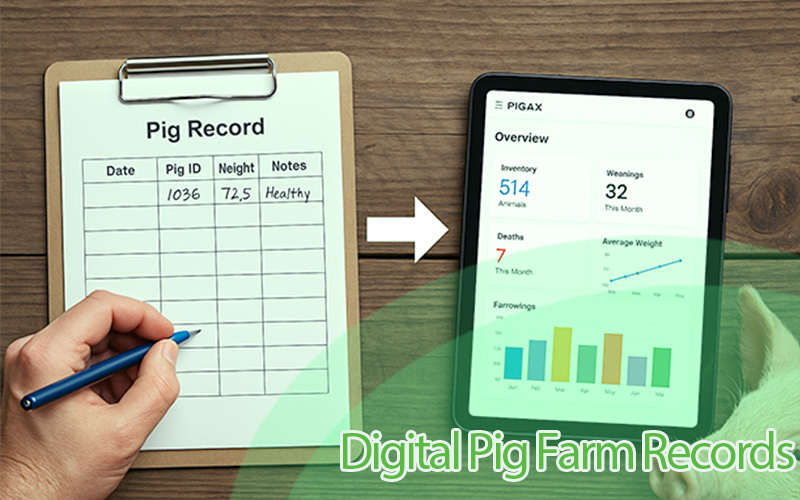3 Principles For Effective Piggery Health Management
Over the past 20 years, the swine industry has experienced many new diseases causing significant problems: porcine pleuropneumonia, swine influenza, PRRS and many more. This makes it more and more complex to raise healthy pigs. Also, health concerns are taking a growing share of the pig production cost which may affect our competitiveness in the export market.
This blog outlines a road map to limit the impact of diseases in a herd. Sometimes in this quickly changing world, we have to stop and reevaluate whether or not we are on the right path. So let us consider three principles to guide you as a pork producer in maintaining the health status of your pig farm.
Principles for effective piggery health management
Use these 3 major principles to improve the health and maintenance technique on your pig farm to reap better results and reduce mortality rates. Note that applying only one of these principles and neglecting the others or applying two and neglecting one will jeopardize the entire procedure. So be sure to follow the principles accordingly.
First Principle: Identify Potential Pathogens
Before trying to control diseases at the farm level, it is essential to get information about the major diseases likely to attack your farm. Understanding how a specific pathogen can spread, infect pigs, replicate and for how long are examples of the type of information needed. The more is known about a disease, the better the chances that this disease will be kept under control at a relatively low cost. Indeed, many factors may interact with field situations, resulting in potential timeline changes. For example, if a sow herd becomes affected by a new strain of the PRRS virus and the idea is to get rid of it, the introduction of replacement gilts should theoretically be stopped for at least 100 days after the last sow was infected by the virus, and not 100 days after the beginning of clinical signs in the herd. I say theoretically because, as discussed later in this blog, there is often a difference between the longest time that an animal can be a carrier of an organism, and the longest time it can shed it.
Knowing the theory surrounding important infectious agents is not enough. One also has to know what’s going on with them in the herd on a real-time basis. Specific and pointed diagnostic and serological monitoring programs are useful tools to follow these agents in a herd. It may allow the prediction of an outbreak long enough to avoid it. Also, it can be used to record the efficacy of intervention strategies or the possible source of contamination if contamination were to occur. On the other hand, profiling herds without any specific goal may be a loss of money. I recommend an investment in diagnostic techniques only if they answer a specific question and if an action to be taken depends on the results. I don’t carry out serological profiling “just to know”.
Second Principle: Keep New Pathogens Away
Biosecurity measures will always remain a fundamental part of a pig farm health program. Indeed, it is a loss of time and money to try to control or eradicate diseases from a herd if this herd is continuously exposed to exogenous infectious agents. It is like blowing out water from a cracked boat.
There is virtually no limit to what could be done in biosecurity. It is easy to do too much in situations where there is a low probability risk, and the opposite is also true. Doing too much needlessly increases production costs and neglecting some aspects may result in an expensive outbreak.
Third Principle: Manage Replacement Animals
A lot of disease problems in our herds are the consequence of an infection pressure that is too high. This means that there is a large quantity of certain infectious agents in the environment. At some point, the animals are not able to cope with this overload and they contract diseases.
One way to reduce the infectious pressure in a herd is to reduce the transmission of pathogens by the dams. This will be the case if the sows have overcome the disease and have good immunity. Gilts are the most at risk of not having completely overcome the disease or of not having a good enough immunity. That is the reason why gilts should be properly acclimatized for the infectious agents of the receiving herd. This should be done as quickly as possible in order to maximize the chance that they will not be carriers of the infectious agents causing these diseases at farrowing. Even very clean herds may take advantage of entering gilts at a younger age. For example, Streptococcus suis and Haemophilus parasuis (Glasser’s disease) are common bacteria even in these herds and there are multiple different strains. Therefore, exposing young gilts to the strains circulating in the herd may reduce the amount of bacteria and improve the immunity these gilts will transmit to their progeny.
Another possibility is to produce gilts at the farm and to close the herd. It is making sense for health concerns but has the disadvantage of making genetic improvement slower and more complex. At least, this option should be considered at some point for a limited period of time when diseases are not under control in a herd.
Also, the health status of the gilt-producing herd may have an impact on the results that can be achieved. If gilts introduced in a given herd are infected with a PRRS strain that is very different than the one(s) present in the herd receiving these gilts, they may not be adequately protected. Besides the gilts may themselves be responsible for an outbreak in the receiving herd, because this herd is not totally immune to the strain that the gilts are shedding. Knowing if a gilt is infected or not with a PRRS strain at the time of introduction (in isolation) can be done much more easily if the gilt comes from a negative herd than if it comes from a positive herd. For this reason, even though previous PRRS virus exposure may facilitate acclimatization, I always favor a PRRS-negative gilt source even for positive sow herds except in very specific situations.
Conclusions
Controlling diseases in a swine herd may be a hard task. A good knowledge of key information on diseases and how to accurately diagnose diseases at the farm level is the starting point for success. Also, to avoid the frustration and losses associated with disease breaks, adequate biosecurity measures have to be established, observed and regularly updated. This can be monitored using a trusted pig management software like pigax to ensure regulated health checks.
The choice of the replacement stock's health status and the acclimatization of these new animals are also major concerns. Finally, management rules dedicated to limiting disease transmission or improving the natural defenses of the pigs are good complementary tools to vaccination and strategic medication programs.




